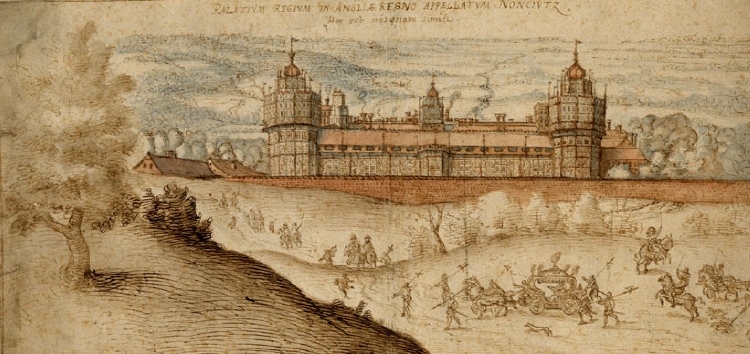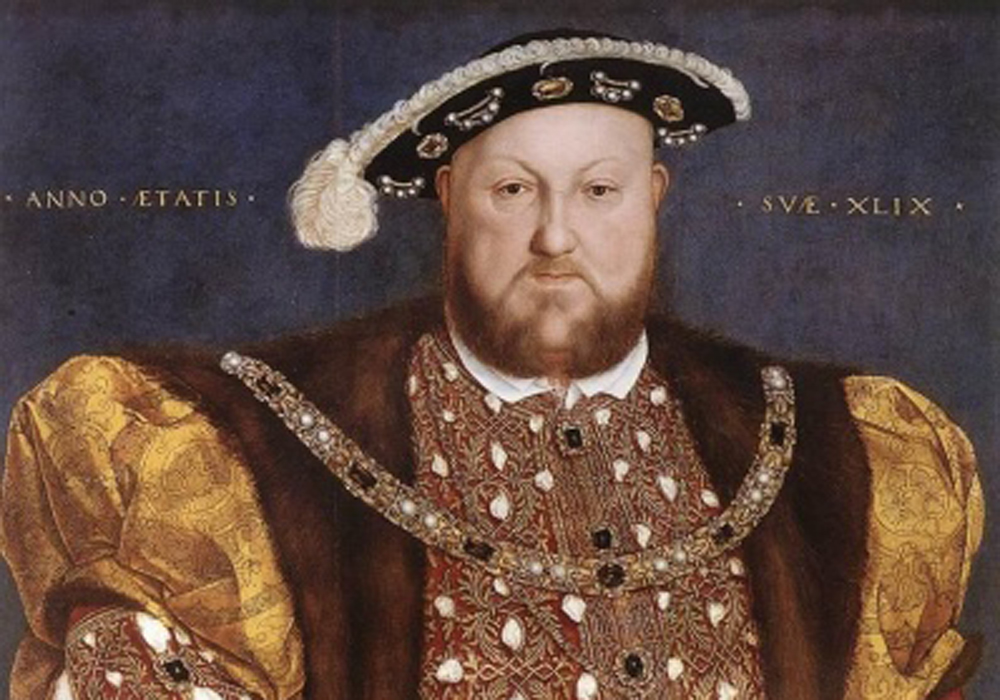

Earlier this month the future of a watercolour painting of the lost palace of Nonsuch by Flemish artist Joris Hoefnagel was saved from export and secured for the nation.
The rare painting, now on display in the Victoria and Albert Museum, London, was acquired with support from the National Heritage Fund and the Art Fund, ensuring that it remains in the UK.
Painted by Hoefnagel in 1568, the palace of Nonsuch was a monument to Tudor excesses, although by then it had temporarily passed out of royal ownership.
Work began on the palace in 1538 as Henry VIII celebrated the birth of his son Edward and the forthcoming 30th anniversary of his accession to the throne.

Built in the Franco-Italian style it became one of the most important buildings of the English Renaissance.
Henry did a proper Tudor job on the Manor of Cuddington near Ewell in Surrey. He purchased the estate from Richard and Elizabeth Codington and then demolished the church and village to build his new palace. He called it Nonsuch Palace as there was no such palace to equal it.
Some 500 workman from across Europe were employed on the site where work began on April 22, 1538. However, it was still unfinished at the time of Henry’s death in 1547 and apparently the king only visited a handful of times while his son Edward showed little interest in the palace built to celebrate his birth.
Then in 1557 the palace passed out of royal ownership altogether when Henry’s daughter Mary sold it to Henry Fitzalan, the 12th Earl of Arundel. Henry got the builders in to finish the job and it is believed it was he who commissioned Hoefnagel to paint his picture.
In 1592 Elizabeth I purchased the former family pile and was a much more frequent visitor. In fact it was here in 1585 that she signed the Treaty of Nonsuch with the Dutch rebels fighting against Spanish rule.
The palace passed into the possession of the next two Queens when James I gave it to his wife Anne of Denmark and his son Charles I gave it to his wife Henrietta Maria.
So how come that a mere forty years later Nonsuch was no more, razed to the ground, the only evidence of its existence a bump in the landscape.
Who could possibly be responsible for this wanton act of destruction? Go on, guess?
Following the death of his mother Henrietta Maria in 1669 Charles II gave Nonsuch to his troublesome mistress Barbara Castlemaine, granddaughter of Barbara St John and Sir Edward Villiers.
You might have thought she would be thrilled to inherit Henry VIII’s palace that had no such equal. But no, not our Babs.
The corrupt countess found the property a drain on her finances, so after she had stripped it and sold everything of value, she applied for permission to knock it down and then sold the fabric of the building, all to offset her gambling debts.
While Barbara Castlemaine may have engineered the destruction of Nonsuch Palace, its good to know that the Hoefnagel painting has been saved for future generations to enjoy.